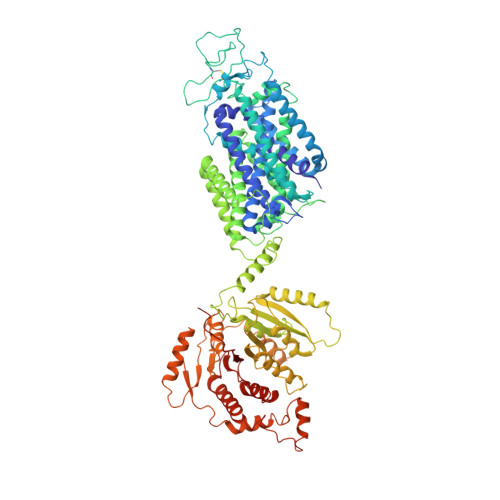Structure and mechanism of the cation-chloride cotransporter NKCC1.
Chew, T.A., Orlando, B.J., Zhang, J., Latorraca, N.R., Wang, A., Hollingsworth, S.A., Chen, D.H., Dror, R.O., Liao, M., Feng, L.(2019) Nature 572: 488-492
- PubMed: 31367042
- DOI: https://doi.org/10.1038/s41586-019-1438-2
- Primary Citation of Related Structures:
6NPH, 6NPJ, 6NPK, 6NPL - PubMed Abstract:
Cation-chloride cotransporters (CCCs) mediate the electroneutral transport of chloride, potassium and/or sodium across the membrane. They have critical roles in regulating cell volume, controlling ion absorption and secretion across epithelia, and maintaining intracellular chloride homeostasis. These transporters are primary targets for some of the most commonly prescribed drugs. Here we determined the cryo-electron microscopy structure of the Na-K-Cl cotransporter NKCC1, an extensively studied member of the CCC family, from Danio rerio. The structure defines the architecture of this protein family and reveals how cytosolic and transmembrane domains are strategically positioned for communication. Structural analyses, functional characterizations and computational studies reveal the ion-translocation pathway, ion-binding sites and key residues for transport activity. These results provide insights into ion selectivity, coupling and translocation, and establish a framework for understanding the physiological functions of CCCs and interpreting disease-related mutations.
Organizational Affiliation:
Department of Molecular and Cellular Physiology, Stanford University School of Medicine, Stanford, CA, USA.

















